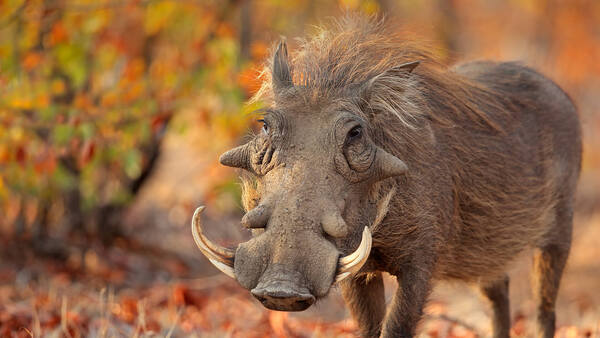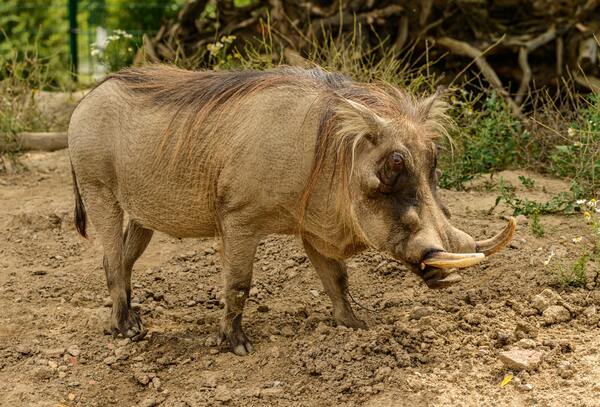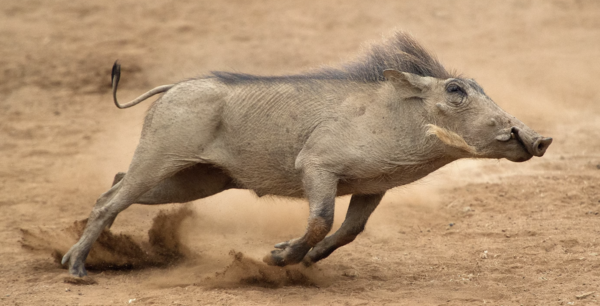Warthogs are fascinating creatures native to the savannas and grasslands of Africa. Known for their distinct appearance and unique behaviors, these wild boars have captured the interest of wildlife enthusiasts and researchers alike. In this article, we will explore the characteristics, habitat, behavior, diet, and conservation status of warthogs, providing a comprehensive overview of these remarkable animals.

Warthogs (Phacochoerus africanus) are easily identifiable due to their distinctive features:
Body Structure: Warthogs have a sturdy, muscular build with a large, elongated head. Adult warthogs typically weigh between 110 to 250 pounds (50 to 113 kg) and stand about 2.5 to 3.5 feet (0.76 to 1.07 meters) at the shoulder.
Facial Warts: The most notable characteristic of warthogs is the presence of large, fleshy warts on their faces, especially prominent in males. These warts are not only a distinguishing feature but also serve a purpose: they protect the warthog's face during fights.
Tusks: Warthogs possess two pairs of tusks. The upper tusks grow continuously and can reach lengths of up to 10 inches (25 cm). Males use these tusks during combat and displays of dominance.
Warthogs have a coarse, bristly coat that is typically gray to brown in color. Their skin is tough and helps protect them from the harsh environment, including the sun and thorny vegetation. Their hair also provides camouflage in the grasslands where they live.
Warthogs are primarily found in sub-Saharan Africa. Their range includes countries such as Botswana, Kenya, Tanzania, and South Africa. They prefer open and semi-open habitats, including savannas, grasslands, and woodlands.
Warthogs do not build traditional dens. Instead, they often use abandoned burrows of other animals, such as aardvarks or hyenas, to shelter themselves. These burrows provide protection from predators and harsh weather conditions.
Warthogs are social animals that typically live in groups called sounders. A sounder usually consists of several females and their young, while adult males tend to be more solitary or form temporary bachelor groups.
Warthogs communicate using a variety of vocalizations, including grunts, snorts, and growls. They also use body language, such as tail movements, to convey their feelings and intentions. When threatened, warthogs may display aggressive postures, including raising their tails and baring their tusks.
Warthogs are primarily diurnal, meaning they are most active during the day. They spend a significant amount of time foraging for food and resting in the shade during the hottest parts of the day.

Warthogs are herbivores and have a varied diet that consists mainly of grasses, roots, tubers, and fruits. They are well adapted to foraging in their environment, using their tusks and snouts to dig for food underground.
Warthogs are known for their unique grazing style. They often eat while on their knees, which allows them to reach grass and roots more easily. This behavior not only aids in feeding but also reduces their vulnerability to predators while they are foraging.
Warthogs face several threats in the wild, including habitat loss due to agriculture and urban development. Additionally, they are hunted for their meat and trophies, which can further impact their populations.
Fortunately, warthogs are classified as "Least Concern" by the International Union for Conservation of Nature (IUCN). Many protected areas and national parks in Africa serve as safe havens for warthogs, allowing them to thrive in their natural habitats. Conservation organizations are also working to raise awareness about the importance of preserving warthog populations and their ecosystems.
Unique Adaptations: Warthogs have a special adaptation that allows them to escape predators quickly. When threatened, they often run away in a zigzag pattern, making it more difficult for predators to catch them.
Facial Warts: The warts on a warthog’s face are not just for show; they can help protect them during fights with other males. The more dominant males tend to have larger warts.
Mother-Young Bonding: Female warthogs are very protective of their young. They have a strong bond with their piglets, teaching them important survival skills and keeping them safe from dangers.
Warthogs are relatively fast animals, but they are not faster than lions or cheetahs. Here’s a quick comparison:
Warthog: Can run at speeds of up to 30 miles per hour (48 kilometers per hour) for short distances.
Lion: Can reach speeds of about 35 miles per hour (56 kilometers per hour) but can only sustain this for short bursts.
Cheetah: The fastest land animal, capable of running at speeds of up to 60 to 70 miles per hour (97 to 113 kilometers per hour) in short sprints.
So, while warthogs can run quickly, they are outpaced by both lions and cheetahs.

Warthogs are captivating animals that play an essential role in their ecosystems. Their unique adaptations, social behaviors, and feeding habits make them a fascinating subject of study. As we continue to protect their habitats and raise awareness about their conservation, we can ensure that future generations will have the opportunity to admire these remarkable wild boars in the African savannas. Whether you're a wildlife enthusiast or simply curious about nature, learning about warthogs enriches our understanding of the diverse species that share our planet.
animal tags: Warthog
We created this article in conjunction with AI technology, then made sure it was fact-checked and edited by a Animals Top editor.